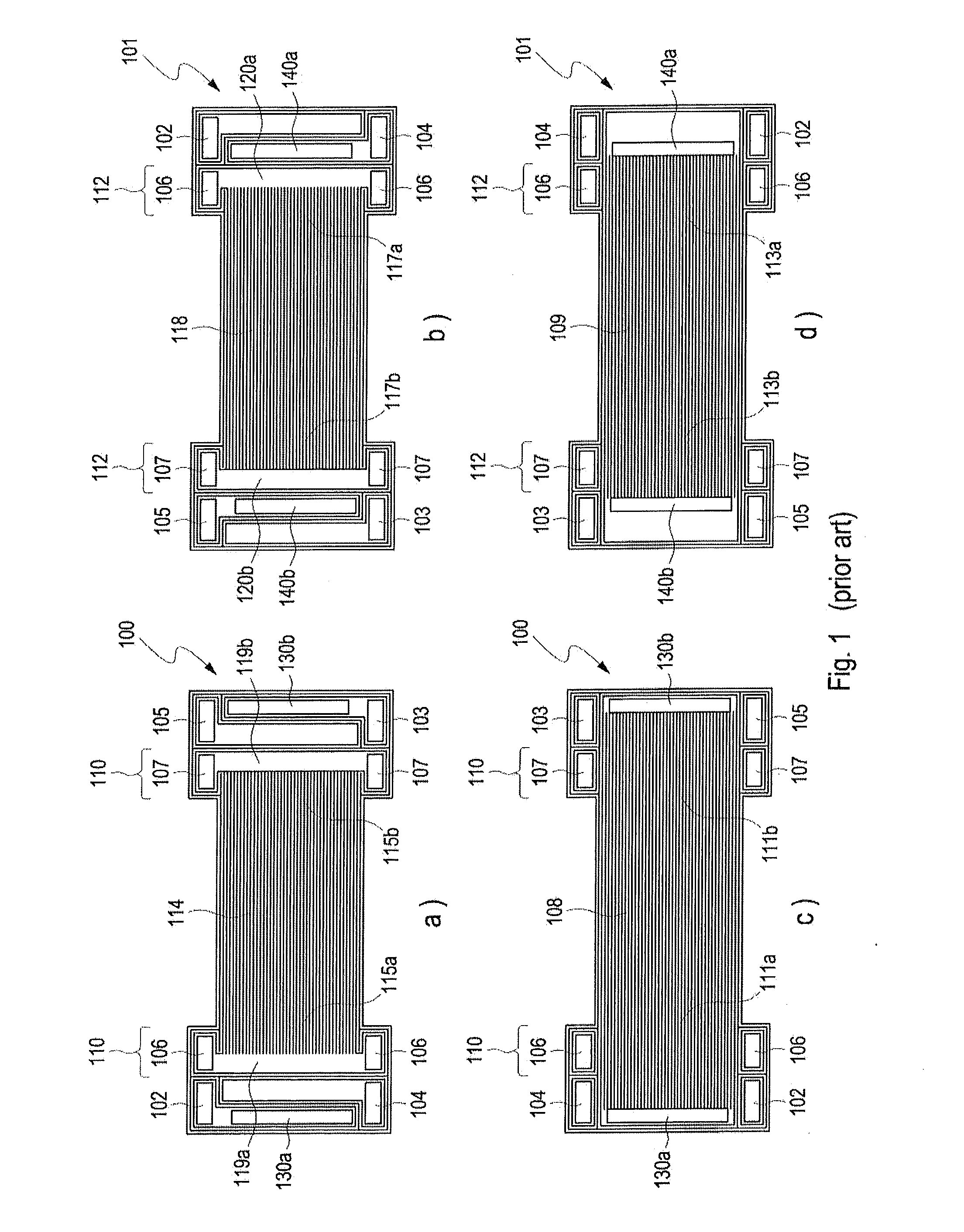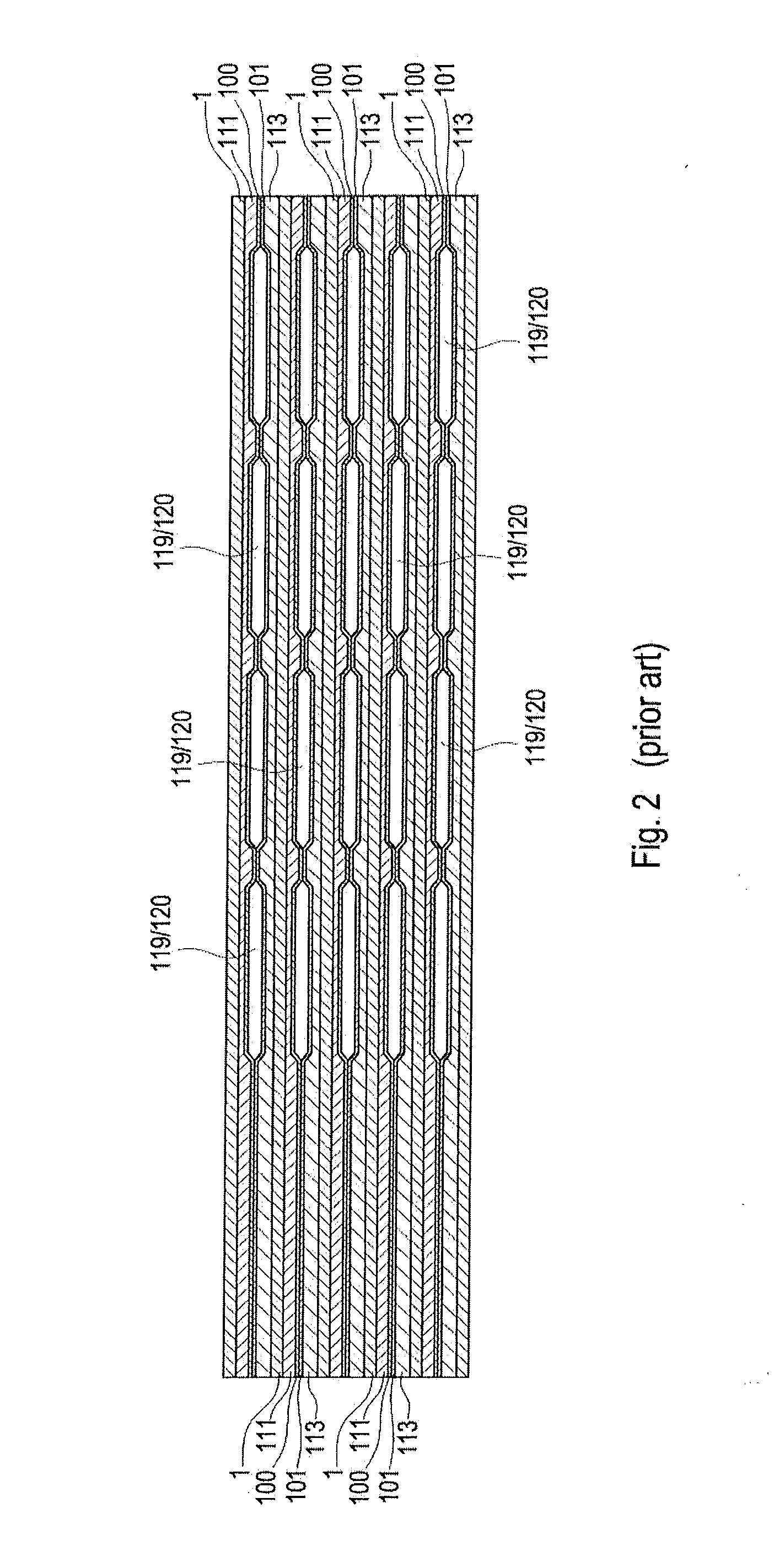Flow field plate for improved coolant flow
a flow field and flow plate technology, applied in the field of flow field plate designs, can solve the problems of affecting the flow of reactants, non-uniform distribution, and impede the flow of other fluids in the coolant transition region, and achieve the effects of improving the flow of coolants, and reducing the pressure drop in the transition region
- Summary
- Abstract
- Description
- Claims
- Application Information
AI Technical Summary
Benefits of technology
Problems solved by technology
Method used
Image
Examples
example
[0055]Analyses were performed to compare the expected pressure drop for the coolant in a conventional fuel cell to the pressure drop expected in an exemplary fuel cell of the invention. The conventional fuel cell was assumed to be of a design similar to that shown in FIGS. 2, 3a, and 3b and intended for use in a high power density automotive application. The inventive fuel cell was assumed to be similar to that of the conventional fuel cell except that the transition fuel channels were offset from the transition oxidant channels as shown in FIGS. 3c and 4.
[0056]In operation, reactant and coolant flows typical for such high power density automotive applications were also assumed. Computational fluid dynamics methods were then used to determine the expected pressure drops for the coolant in the transition and active regions in the two fuel cell designs.
[0057]In both fuel cells, the coolant pressure drop in the active region was determined to be about 44 mB. In the conventional fuel ce...
PUM
| Property | Measurement | Unit |
|---|---|---|
| output voltage | aaaaa | aaaaa |
| pressure drop | aaaaa | aaaaa |
| electric power | aaaaa | aaaaa |
Abstract
Description
Claims
Application Information
 Login to View More
Login to View More - R&D
- Intellectual Property
- Life Sciences
- Materials
- Tech Scout
- Unparalleled Data Quality
- Higher Quality Content
- 60% Fewer Hallucinations
Browse by: Latest US Patents, China's latest patents, Technical Efficacy Thesaurus, Application Domain, Technology Topic, Popular Technical Reports.
© 2025 PatSnap. All rights reserved.Legal|Privacy policy|Modern Slavery Act Transparency Statement|Sitemap|About US| Contact US: help@patsnap.com



